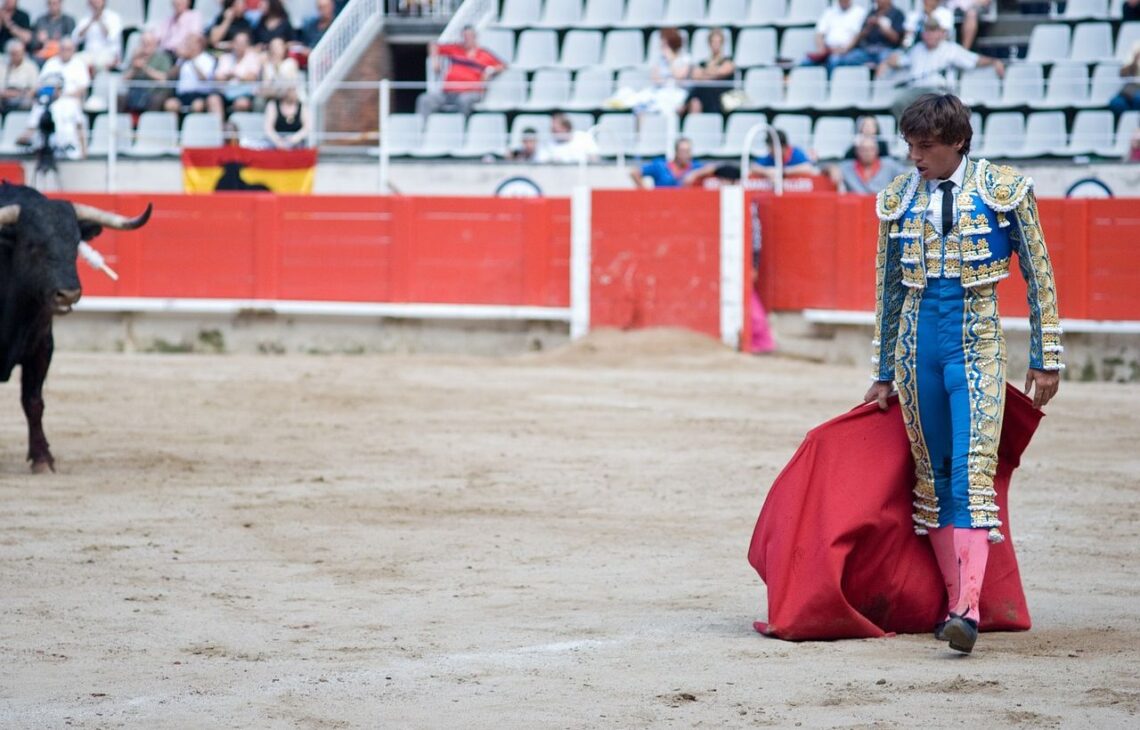
What does “olé” in bullfighting mean?
Bullfighting is a centuries-old tradition deeply rooted in Spanish culture, captivating spectators with its unique blend of bravery, skill, and drama. From the distinctive costumes to the mesmerizing choreography, this spectacle has intrigued people worldwide.
One term you may frequently hear during a bullfight is “olé.”
It’s a word that has made its way into pop culture, especially sports, and has spread around the world. But what does “olé” mean? Where did the word come from? When should you say it? And what does all this have to do with bullfighting?
In this article, we delve into the origins and significance of “olé” in bullfighting, providing you with a deeper understanding of this iconic expression.
What do bullfighters say?
Actually, they probably don’t say much that isn’t necessary to communicate with the other toreros who are in the bull ring. When they do talk, it’s nearly impossible to hear them without a microphone over the roar of the crowd. And, because “olé” is used as a sort of congratulatory exclamation for someone’s excellent performance, a bullfighter would probably not say it because of something that he did himself. “Olé” is something you will mostly hear from the spectators at a bull fight.
The Origins of “Olé”
There is some debate as to the origin of the word olé, but general consensus is that it comes from the Arabic word for God, Allah. The Spanish language is heavily influenced by Arabic thanks to 700 years of Moorish occupation before the Iberian Peninsula was reconquered by the Catholic kings of that time. In the North African culture, it was customary to shout “Allah!” when a dancer performed extraordinarily well, in recognition of the God-given skill and believing that the dancer was, in that moment, a vessel through which humans could witness the beauty and power of God. Over time, the pronunciation of the word changed slightly and became a common exclamation in the Spanish language.
During a bullfight, the crowd uses “olé” to show appreciation and admiration for the matador’s skill, courage, and technique. It is a form of applause, indicating approval and excitement. The word may be shouted or chanted, becoming progressively louder and more enthusiastic as the bullfighter showcases his expertise. The vibrant atmosphere intensifies with each “olé,” creating an electric atmosphere in the bullring.
The Significance of “Olé” in Bullfighting
In bullfighting, “olé” embodies various meanings that go beyond its literal translation. It refers to the bullfighter’s ability to execute precise moves, evade the charging bull, and ultimately dominate the confrontation with elegance and artistry. Every “olé” acknowledges the matador’s mastery and demonstrates the audience’s captivation by his performance.
Beyond being an expression of approval, “olé” represents the collective sentiment of the crowd, reinforcing the connection between the spectators and the bullfighter. It symbolizes an unspoken agreement between the audience and the matador, acknowledging their shared passion for this traditional spectacle. The more “olé” heard, the more successful and impressive the matador’s actions are perceived.
When can I use “ole”?
Conventions on when you can use “olé” vary slightly from country to country, but in Spain, you can generally say it anytime you are impressed by somebody’s performance. Today, it is often heard at bull fights, football matches, and in Flamenco dance shows, as a way to cheer and motivate the torero, team or dancer. If you find yourself at a bull fight or some other public event, you won’t have to think too much about it because everyone around you will be shouting “olé!”. Quickly, you’ll get the hang of when to use it as you become more familiar with bull fighting procedure and technique.
While “olé” primarily serves as a positive reaction, its emotional impact goes beyond mere applause. The word has the ability to evoke intense emotions, excitement, and thrill, enhancing the atmosphere in the bullring. It is common for the spectators to chant “olé” in unison during particularly breathtaking or risky moves, amplifying the energy and creating an unforgettable experience for both the audience and the matador.
Additionally, “olé” draws parallels with flamenco music and dance, another emblematic aspect of Spanish culture. Both bullfighting and flamenco share a connection to the passionate, expressive nature of Spain. The rhythmic sounds and movements of the dancers, accompanied by the commotion of the audience chanting “olé,” create a sensory experience that is deeply ingrained in Spanish traditions.